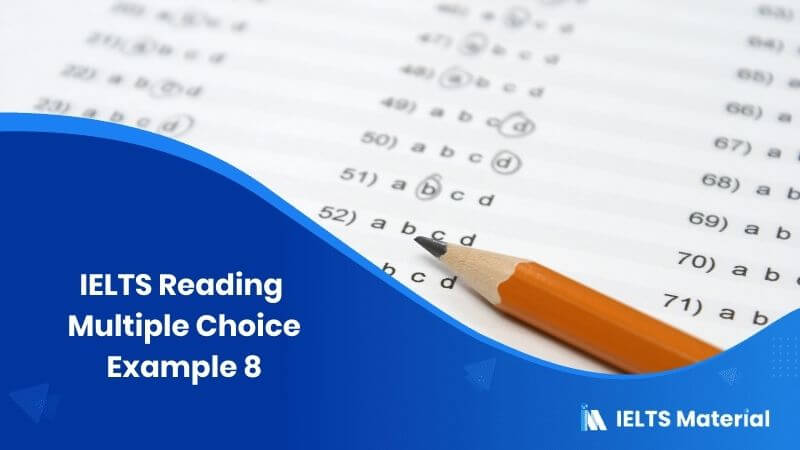IELTS Reading Multiple Choice Example 8
Table of Contents

Limited-Time Offer : Access a FREE 10-Day IELTS Study Plan!
Sample Reading Passage:
| The first telescopes built in the early 1600s were very primitive inventions allowing the user to see around 3-times further than the naked eye. It was not too long, however, until Italian astronomer Galileo heard about the invention ‘that through use of correctly-positioned lenses, allowed people to see things a long way away. The tools used in the manufacturing of the first refracting telescope were all Galileo needed to know and within 24 hours he had developed a better one. In fact, the process of improvements Galileo made on Lippershey’s telescope was quite dramatic. Whereas the original version had a magnification of 3, the new telescope had a magnification of around 30. Galileo achieved these extraordinary results by figuring out the combination of the positions of the lenses and also by making his own lenses that were of better quality. Although he originally thought they were stars, the better quality lenses – and some scientific analysis – enabled him to eventually use his telescopes to see the moons of Jupiter. Galileo’s refracting telescopes – so-called due to the way they handled the light that passed through them – were the standard at that time. |
Questions:
Choose answers from letter A-D next to questions 1-5.
1.When was the first primitive telescope invented?
- Late 1700s
- Early 1600s
- 1709
- 1609
2. What did Galileo wanted to know?
- Tools used in the making of a refracting telescope
- How many magnification lenses was used
- Both A & B
- None of the above
3. How many magnification lenses were used by Galileo in the manufacturing of telescopes?
- Less than 30 lenses
- Exactly 30 lenses
- More than 30 lenses
- Nearly 30 lenses
4. What enabled Galileo to see the moons of Jupiter through his telescope?
- Good quality lenses
- Scientific examination
- Both A & B
- None of the above
5. How many hours did it take for Galileo to develop an improved telescope?
- Around 24 hours
- Exactly 24 hours
- More than 24 hours
- Less than 24 hours
Answers:
| 1.Early 1600s
2. Tools used in the making of a refracting telescope 3. Nearly 30 lenses 4. Both A & B 5. Less than 24 hours |
Explanation of the Answer:
Unlock Explanation
| For the first question, the answer is in the first line, which states that the first primary telescopes were built in the early 1600s, allowing the users to see 3-times further than the naked eye. So, the answer is “B. Early 1600s”. Primitive means ancient, Naked eyes means unaided eye, and the question has been paraphrased.
For the second question, the answer is in the fourth line, where Galileo wanted to know the tools used in the making of the refracting telescopes. So, the answer is “A. Tools used in the making of a refracting telescope. Here, Making refers to Manufacturing. For the third question, the answer is mentioned on the eighth line, which states that Galileo’s new telescope had a magnification lens of around 30. So, the answer is “D. Nearly 30 lenses.” In the answer around has been paraphrased into Nearly. For the fourth question, the answer is given on the tenth line, which states that with the help of better quality lenses and some scientific analysis, it helped Galileo to see the moons of Jupiter through the telescope. So, the answer is” C. Both A & B. Option A & B has been paraphrased. Here good quality refers to better quality, and examinations mean analysis. For the fifth question, the answer is “C. Less than 24 hours. In the given passage it is mentioned that Galileo developed an improved telescope within 24 hours. Thus, within has been paraphrased into less than. |
Also check:
Practice IELTS Reading based on question types

Start Preparing for IELTS: Get Your 10-Day Study Plan Today!
Recent Articles

Nehasri Ravishenbagam

Haniya Yashfeen

Haniya Yashfeen

Haniya Yashfeen




Post your Comments